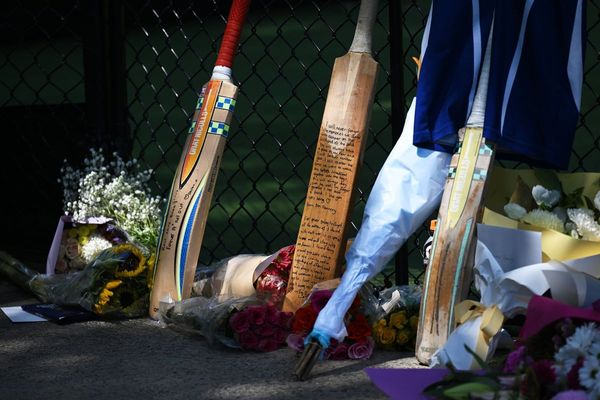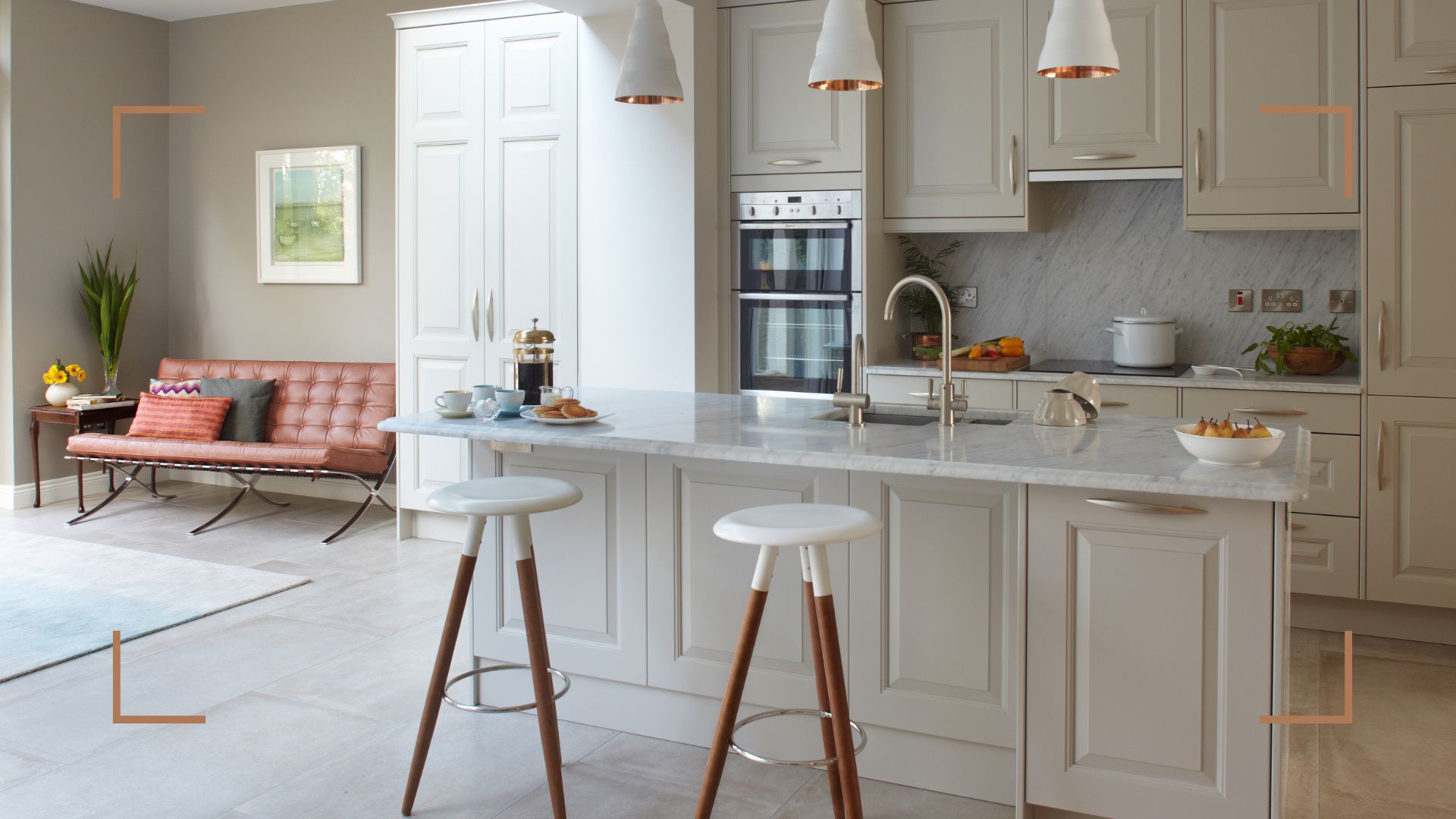
Are your cupboards getting hard to close? Or perhaps you keep losing smaller items, as they become hidden under all your other things. If this is ringing true then it might be time for a big sort-out, but don't panic, we're here to help with our expert guide on how to declutter your home like a professional.
We all know it can be hard to get motivated to declutter, but having a busy cluttered space can feel like a huge weight on your shoulders. Whether you’re decluttering your bathroom or finally decluttering your bedroom drowning in stuff, there are ways to make the whole process easier and more efficient.
So whether you're on a pursuit to organise a small space or transform the living room before spring, the first step is always to declutter. Here are some quick and easy tips to help you along the way.
How to declutter your home: 20 easy-to-action tips
Cluttered surroundings not only make your space look and feel smaller, but clutter can have a detrimental effect on our emotional well-being. The simple act of organising your kitchen can create an all-mighty feeling of satisfaction and help you focus your energies elsewhere.
"Often when I work with clients to organize their homes, they comment on how much their lives change simply by knowing where everything is. Not only does it save time, but it also makes it easier to put things back where they belong, creating discipline," explains Kate Ibbotson, Founder of A Tidy Mind.
Follow these expert tips to declutter easily and change your home's energy.
1. Plan
Sometimes starting the process of decluttering can feel a little chaotic and overwhelming, so it's wise to make a plan of attack. Regardless of whether you're organising a small bedroom or your whole living space, a strong plan will help you on your way.
"Write a plan of what you want to get organized. Order it in preference of most bother to you but easiest to fix, to least bother to you and harder to fix," advises Siân Pelleschi, founder of Sorted! and Association of Professional Declutterers and Organisers (APDO) President.
"From there you can start on the easy, big wins that then make you want to continue and then work on the harder not so worrying areas when you feel more in control."
Elaine Penhaul, interiors expert and director of award-winning national home staging company Lemon and Lime Interiors also sings the praises of creating a robust plan before getting started.
"When transforming your home, whether that be for relaxation or seasonal hosting, the first step is making a plan. Walk through your house slowly with a notebook in hand, identifying the strengths and problematic areas that you want to improve in each room. Take notice of bookcases that are overflowing or wardrobes that are bursting at the seams," Elaine says.
"Once you have created your list you need to equip yourself with boxes, labels and marker pens, before allocating everything into ‘skip, store and show’ piles. Make this a fun communal activity for the family, with some great music and snacks to get you through the declutter.”
2. Assign a place for essentials
Kate advises storing essentials in a box in a place you can easily access. Not only does this remove clutter from other places, but it also means you won't throw them out during a zealous clean-up.
"Assign a box or dish for your essential items," she advises. "When you return home, you need a place to put items such as your wallet, phone, keys, diary and the other miscellaneous contents of your bag (emptying your bag daily will ensure you avoid cluttering it up). I recommend an attractive, roomy box kept on a shelf in the kitchen. This will reduce clutter and save you time searching for these items the next morning."
3. Focus on one room at a time
The prospect of decluttering and deep cleaning an entire home in one go can feel overwhelming, particularly if it’s been a while since you embarked on an edit of your home. Instead, set aside a couple of hours to focus on one room. Start with the main space before you clear and order storage such as cupboards and chests of drawers.
It's better to apply laser focus to one specific area, before moving on to the next one, otherwise, you'll end up half-completing some rooms, possibly creating more chaos than order. If you're short on time, you can narrow your focus further and just concentrate on one shelf or drawer at a time - for example, you could spend one session organising your kitchen drawers, before moving on to the bigger things next time.
"It can be easy to get distracted. When you’re decluttering or organising a specific area, work only in that area and organise while there until finished. Create four piles: items to be given away/sold, items to be put back in their rightful homes elsewhere in the home, items to go back into that space, and those that are no longer fit for purpose," advises Siân.
"Once you’ve gone through the whole area, put back those items that live there first and then work on the other piles. Don’t be tempted to put back items around the rest of the home while you’re still organizing it as you can then be distracted with other jobs."
4. Group similar items together

Lisa Pantling, Membership Director at APDO and founder of Clutter Free Living advises grouping similar items. When you see how many of each item you own, it can help you understand the ones you can get rid of. After all, who needs five can openers?
"Like with like is a great mantra for sorting and organizing, sometimes getting straight into decluttering can feel a little overwhelming, so if you start by simply grouping similar items you can make the rooms look a great deal tidier, while also preparing items in categories ready to go through when you are ready," she says.
"This can also help you decide which are the 'best' or 'favourite' items to keep," she says. "If you have lots of similar t-shirts, for instance, you might be able to let go of any that don't fit or feel great when you wear them, any that are damaged or a bit bobbly and be left just with those that are the best of the collection."
5. Follow the '4D method' - do, ditch, delegate, defer
Embrace this professional decluttering method, often used in project or time management. Julie Stevens, APDO's professional development director and founder of Younique Designs Ltd swears by the 4D method for decluttering with efficiency.
"For every item that you touch, ask yourself - is this something that needs doing, ditching, delegating, or deferring? Allocate a container (box) for each D and set aside time to deal with the contents. Hint: The ditch box is more often than not simple rubbish or recycling so can be dealt with really quickly and is an instant win."
Anything in the "do" box, you'll want to keep and store away. If you live with others, put anything of theirs into the "delegate" box for them to sort.
Your problem clutter can sit in the 'defer' box. Keep it there, only bringing the items out when you need them. It will quickly become clear what's essential and what's not.
Julie advises starting in one room and working for 30 minutes a day using this method. You'll be surprised how easy it is to detect the things you want to ditch. Depending on what the items are, you'll want to consider donating or recycling, rather than putting them in the trash can.
6. Set a timer
Decluttering can seem like a mammoth task, so consider tackling it in short, productive bursts. Set your phone to alert you in 20 minutes and see how much clutter you can sort in that time.
"Start with a drawer and time yourself for 20 minutes to see how far you get. If you find that was easy, work on a slightly bigger area (again for 20 minutes) and see how far you get. You’ll start to know how long it takes you to get through a space/type of item which in turn will help when planning to declutter an area," advises Siân.
You’ll be surprised at how much you can get through in a short amount of time when you're fully focused on the task.
7. Give items a 'home'
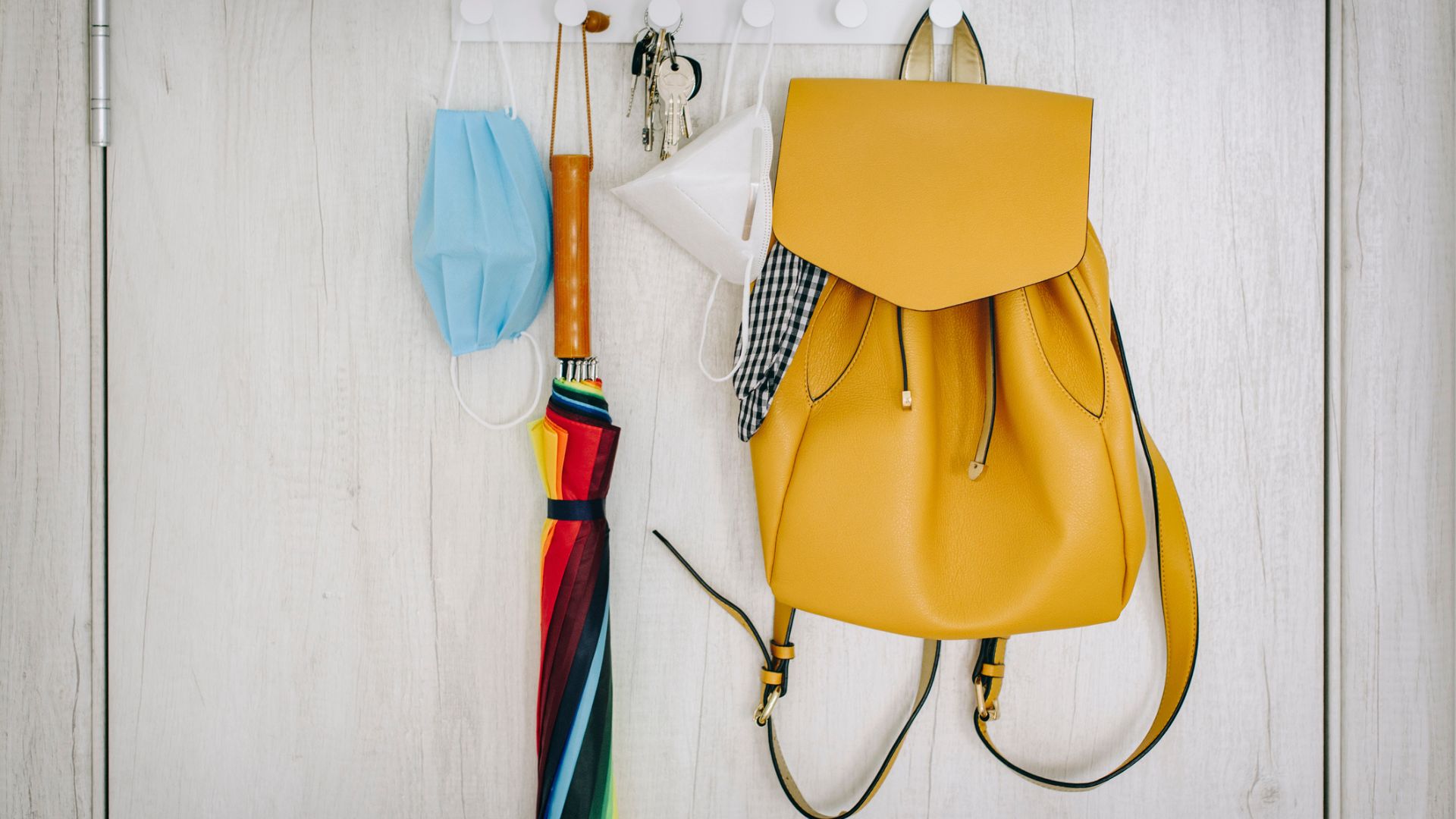
It's important to give each item a specific home when you're decluttering. Not only will this help you identify any duplicates, but it will mean you can avoid an accumulation of clutter in the future, as you'll get into the habit of putting items in their correct place.
"It’s all about making it easy for you going forward. Give items home in areas where they are easily found or most needed. It’s okay to have a pen pot in each living space if you regularly need them there but it’s not great to have to walk through the house from one side to the other to put your coat away when you come home," advises Siân.
"Likewise, don’t overcrowd an area with too much – you don’t need all of your extra toiletries crammed into the bathroom, it’ll just make it feel messy and disorganised. Just keep what you’re using available and have spares in another cupboard nearby or cut down on the extras you’re housing if you don’t have the space."
If you're working through one room at a time, or are short on time, put anything that doesn't belong there in a pile until you can find a home. You can store this 'pile' in a box, bag, or storage unit out of the way until you have time to organise your miscellaneous items. But avoid letting these 'piles' add up: the last thing you want is more clutter.
This is a great tactic when it comes to working out how to clean a bathroom, or how to organise your pantry.
8. Get rid of clothing you haven't worn for the last year
If you haven’t used an item for a year and can’t see it being used in the next one, then sell, recycle or donate to a charity shop. Check out our handy guide on how to sell clothes online if you're looking to generate extra cash.
Once you've decluttered your wardrobe, think about swapping your hangers around so the hooks face outwards. When you wear the items, put the hangers back so the hooks face the wall. After one year, consider donating or recycling any clothing on hangers where the hook is still facing outwards, as you'll know that you haven't worn them over the past year.
Of course, there are exceptions. For example, you might reserve your best designer bags for special occasions. Similarly, your favourite designer frocks might only get an outing every few years. In this case, ensure these items are stored carefully, ideally in garment bags in a well-ventilated space.
Check out our dedicated guide on organising your closet to ensure it is not only free from clutter but super organised so you don't have to declutter it again anytime soon. We also cater for organising a small closet with lots of clothes.
9. Carefully assess sentimental items
Sentimental items are the trickiest ones to get rid of but often are some of the worst culprits of negative things you should declutter from a home.
Marie Bateson, APDO's Volunteers Director and Owner of Cut the Clutter recommends thinking about alternative ways to honor late loved ones or special memories. "The memories are not attached to the items however, they may prompt them, but they will always live in your head," she says.
"Articles of clothing can be made into all sorts of things. Teddies, cushions, patchworks, or even fabric hearts that you can hang around the home or garden." You can also repurpose jewellery, which can be taken apart, resized, or remodelled, meaning you can still wear a piece that includes part of the original item.
"Sell the items and reinvest the proceeds in some way to honour the memory," she adds. "You could buy a memory box, a picture frame, a shrub or tree for the garden, something for the grave or donate the money to a good cause that would have made the owner happy."
Before you donate, sell or remodel anything, remember to take a photo of it, advises Bateson. You can set up a folder on your phone or computer so you can return to it if you want to jog your memory.
While it's good to be realistic about your sentimental items, try to avoid getting caught up in the moment and throwing things away that you might later regret.
"When attempting to de-clutter your home, it can be easy to simply start packing up boxes and bags to take to the charity shop. However, some items might be the things that make your house your home, holding sentimental value or reminding you of memorable adventures, from postcards to travel books," warns Nadia. "These home comforts might just need a little reorganization, clearing other items from the bookshelf or moving them to a photo frame, mantlepiece or coffee table."
10. View your home as a visitor
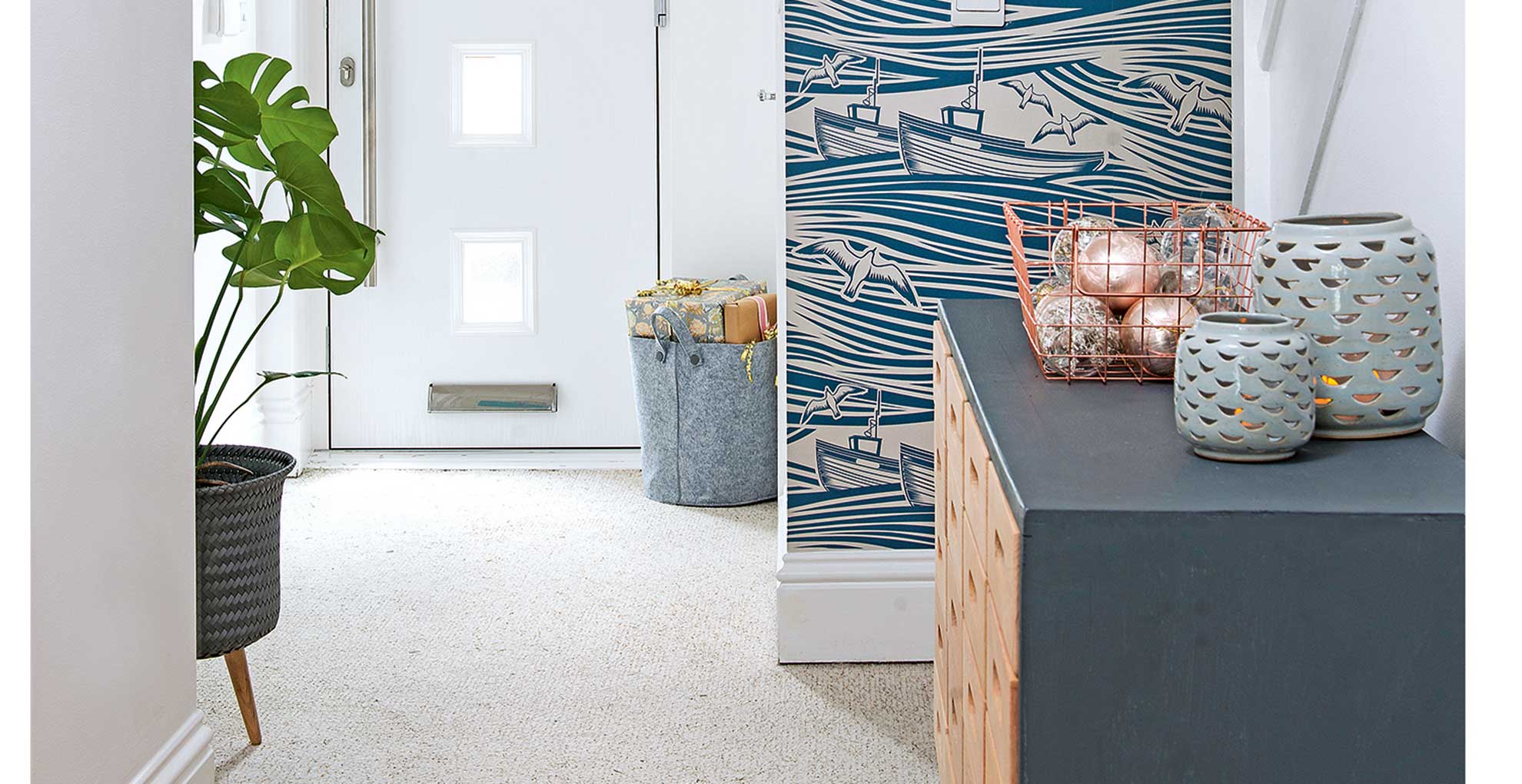
"When you are in your home every day, you may not even realise when things look cluttered or out of place as you’re so used to it being that way. Enter your home from the eyes of a visitor and walk around each room. Make notes as you go of things that don’t look very tidy, organised, or clean and then make some changes accordingly," advises Ryan McDonough, interior design expert at Myjobquote.co.uk.
If you're still struggling to objectively assess your space, consider taking photographs. It might sound extreme, but your perspective will change.
“Photograph the rooms that you are planning to declutter - your perspective will change when looking at the room through a screen, this will also keep you accountable for the decluttering. In reality, the eye tends to overlook what we have become accustomed to; we skim past the pile of old magazines and the wilting house plant in the corner because we know they are on our to-do list," adds Elaine.
"Taking photographs before decluttering is a great morale boost when you finish a room. You can look back at what you have achieved already, which will help you conquer the next room."
11. Ask if items 'spark joy'
This mantra by Marie Kondo was popularised in 2019 following her Netflix show, and the advice still stands.
"Use this criterion to decide what to keep," says decluttering guru Marie Kondo, author of Spark Joy, An Illustrated Guide to the Japanese Art of Tidying.
"Hold the item firmly in both hands and pay attention to how your body responds. If it doesn’t bring you joy, you will notice that your body feels heavier. Remember that you are not choosing what to discard but rather what to keep."
12. Remove something old every time you buy something new
Removing something old for every new thing you bring into your home. For instance, if you’ve bought a new umbrella, then do you need your old one? Throw, or donate duplicate items immediately, as they'll quickly accumulate otherwise.
"Once you've started decluttering, bring in the 'one in, one out' rule," advises Ryan. This means for every new thing you bring into your home; you must get rid of something that was already there. This will help prevent your home from becoming overcrowded."
This could be a great way to declutter books if you don't have a vast bookcase (or an impressive IKEA Billy bookcase hack) to display your best-sellers.
13. Enlist the help of others
"Getting a second opinion can be very helpful when decluttering," poses Ryan. "Ask a family member or friend to pick out some things to donate or throw away. If you disagree, you must give your friend a reason for wanting to keep the item. If they don’t agree with your reasoning, it’s time to let it go."
For a less hands-on approach, you can also take photographs of items you are unsure about and enlist a close friend or family member for a second opinion.
14. Be more mindful as you declutter
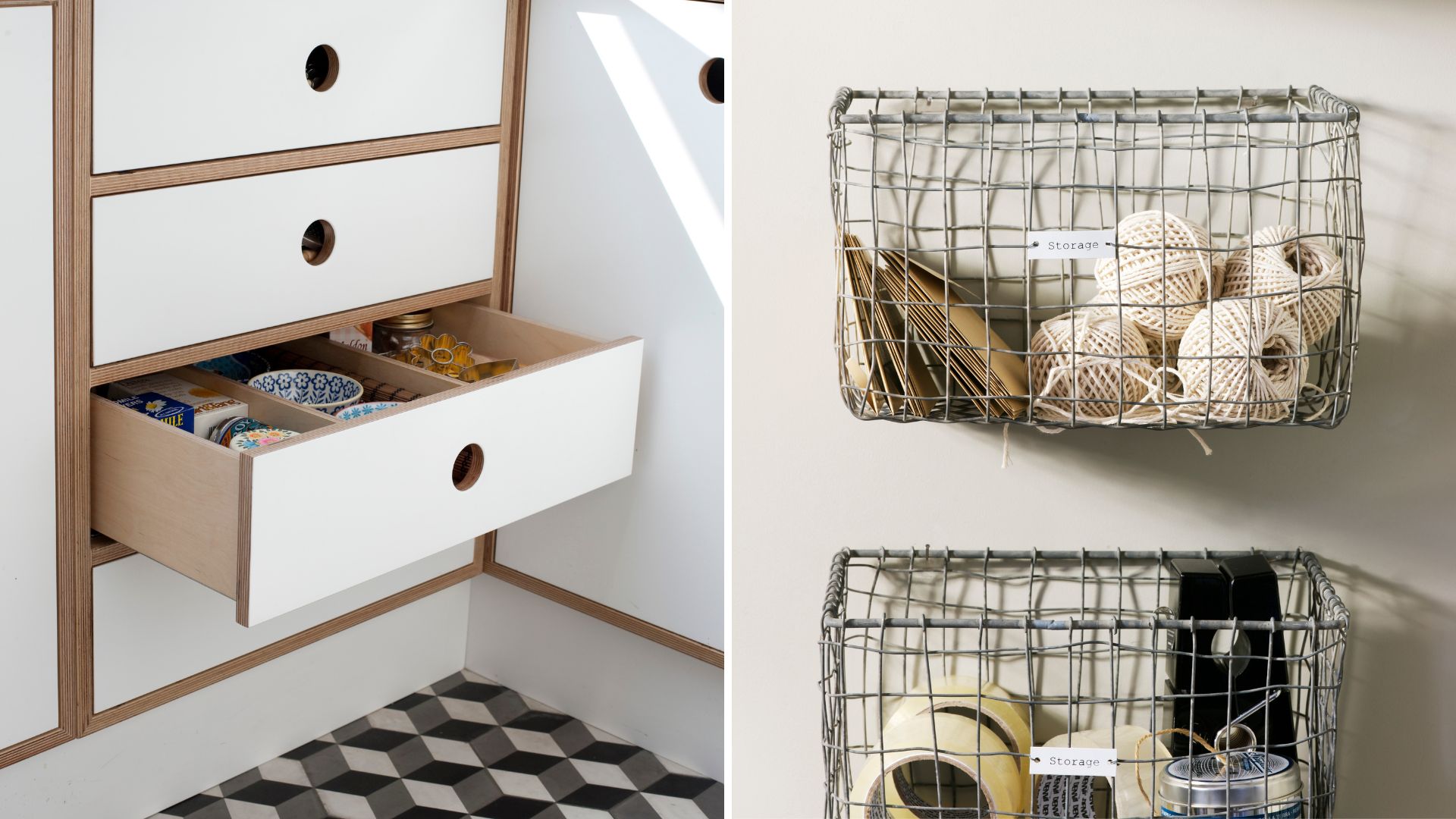
"Before you spend a fortune on expensive storage solutions you think you need, declutter differently," advises Suzanne Roynon, expert interior therapist and Feng Shui consultant. Decluttering without being mindful about what counts as clutter (this is unique to everyone) means the clutter quickly reappears and you’re back at square one."
"You might even be wondering if you need to move to a bigger house to deal with all your stuff. Using the principles of Interiors Therapy develops a completely new perspective on possessions and a lasting low tolerance for clutter so it doesn’t come back."
15. Make a motivational playlist
Stay focused and motivated to tackle the job at hand with a dedicated playlist that will spur you on, similar to how it's easier to exercise to music to focus your energy.
Line up a playlist of your favourite tracks to play while you declutter. It’s been scientifically proven that music triggers a release of dopamine, the feel-good chemical in your brain that boosts your mood and therefore is just the thing to motivate you to tackle a task you might otherwise put off – such as cleaning or decluttering.
16. Return items that don't belong to you
Sometimes it takes a good clear out to unearth possessions at the back of the cupboard that don't belong to you, you may have borrowed them months before and entirely forgotten about hidden away out of sight.
Accessing your storage to see if there are items you can return to their rightful owners is a great way to cut down on clutter and less painful than having to ditch your possessions to save space.
17. Make decluttering a daily habit
Start as you mean to go on, just like daily habits that keep your house clean and tidy, prioritising decluttering can make a huge difference. "Make decluttering a regular, daily activity," suggests Kate. "Spaces need to constantly change and adapt to our needs. So once you do a ‘main declutter’, plan to have regular ‘mini declutters’ every week or throughout the year."
"You can reassess whether your belongings still fit into the ‘beautiful or useful’ category or still add value to your life in some way," Kate adds. "If not, let them go and donate them to a charity shop, such as the British Heart Foundation."
18. Access your surroundings
Don't simply declutter without thinking of how the process could help to create a happier home environment and bring more positive energy to your home.
"Walk around your home and notice any areas where you’re obliged to divert around furniture or can’t open doors fully," says Suzanne. "This is impacting your energetic flow and managing it now will help future-proof your home."
"Deal with the piles of stuff you haven’t got around to yet; notice where clutter gravitates to and work out why; relocate awkward chairs and tables and take control of your living environment so it works for you.
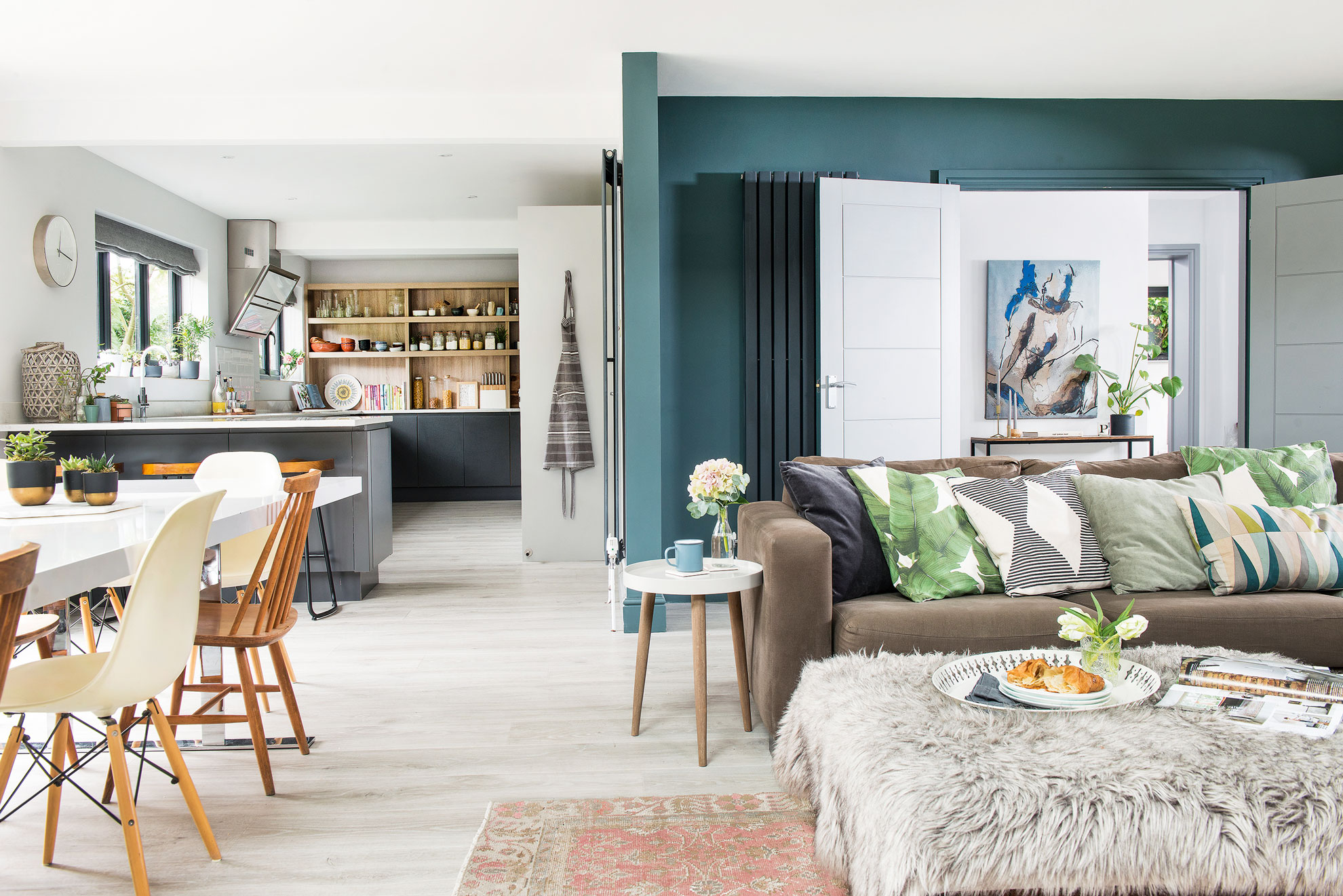
19. Set clear goals
The key to organising any space efficiently is to have clear goals of what you want to achieve. "You are more likely to stay motivated if you have defined your ‘decluttering goals’," agrees Kate.
"Ask yourself ‘What is my vision for my home?’ or ‘How would a clutter-free home make life easier?’," says The more specific the goals, the better so aim to come up with things like keeping the kitchen table clear, ensure I can see everything in a cupboard at a glance, be able to see and access everything in the loft."
Be mindful to declutter the loft so it doesn't become a dumping ground of things.
20. Buy the right storage solutions
After you've finished decluttering, nifty storage items like drawer dividers can help you keep the place in order. But ensure you buy these after you declutter, advises Lisa, as you'll otherwise pack away old, superfluous items.
"You can use any old phone boxes, shoe boxes, or gift boxes as drawer dividers or cupboard organisers, and that will help keep your new categories in order. If you want to get fancy then there are lots of decorative boxes and baskets to suit all budgets," she says.
Kate also praises drawer dividers when it comes to home organisation ideas. "Utilise draw dividers or open containers. These can be used to separate items in any drawer, cupboard or shelf. You don’t need to spend a lot – open shoe boxes or Tupperware works well. Just don’t bother with a lid, as this adds work."
For storage suggestions, check out our dedicated guides on kitchen storage ideas and bathroom storage ideas.
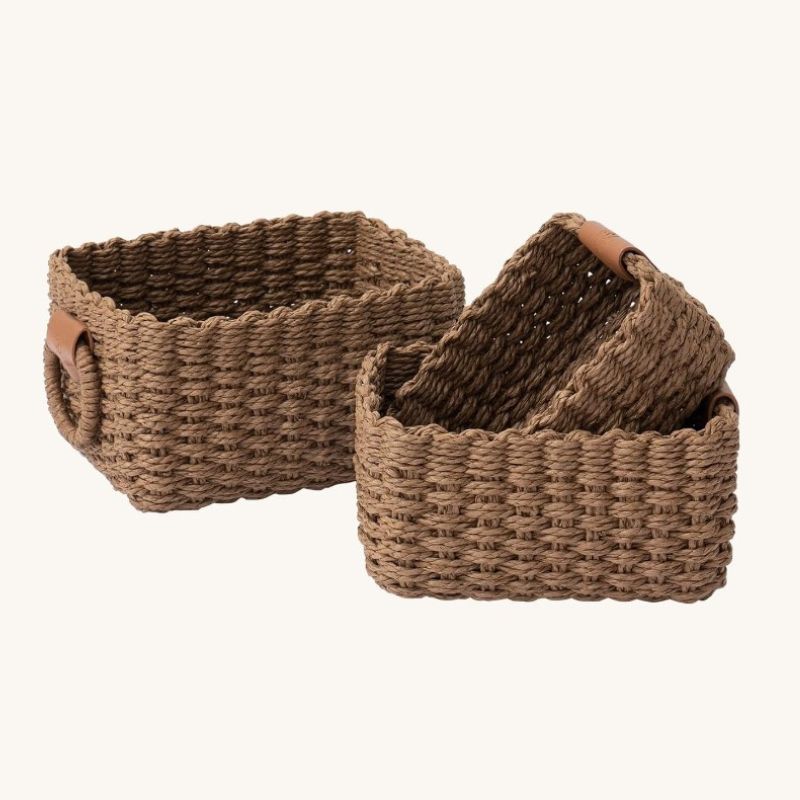
RRP: £23.99 | If you're looking to organise your space without sacrificing style then these minimalist wicker baskets are perfect for your space. They're ideal for grouping small things so you don't lose them!
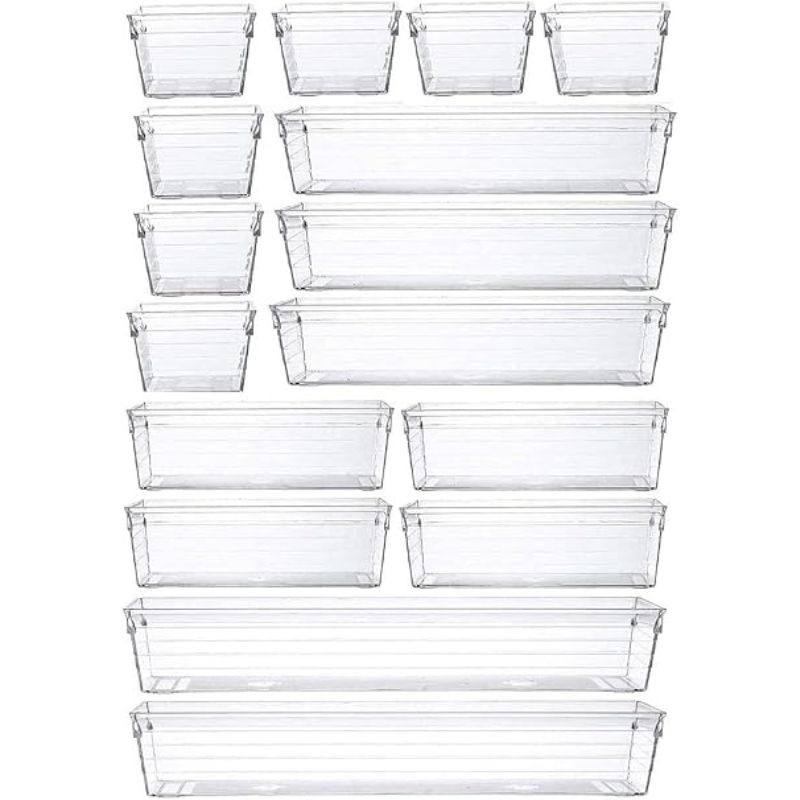
RRP: £17.99 | Sick of your drawers being a chaotic mess? These plastic drawer organisers are just the thing for restoring a little peace and order to your drawers. They're shallow enough to fit into almost any drawer and are particularly great for a make-up lover's vanity.
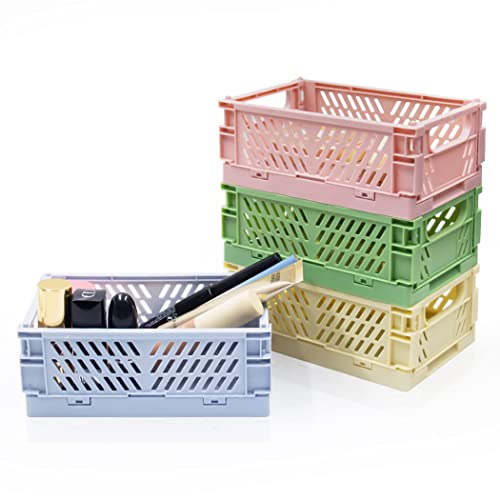
RRP: £8.99 set of 4 | These crates are great for any storage spaces that need to be kept on show as they're both functional and provide a pop of colour. Not only are these crates easy to stack and store, but they also fold down if you declutter a little too well.
FAQs
How to begin to declutter your home: professional tips
Getting started can be the hardest task when decluttering your home, often because of the sentimental value of items that begin to gather and feel like 'clutter'. Gala Magriñá has over 15 years of interior design experience, but her true calling lies in empowering the masses to explore the emotional and energetic layers of their environments.
Inspired by her own holistic wellness journey, Gala has developed a transformative approach that helps clients clear the emotional “clutter” many of us hold onto, creating space for personal growth and fulfilment.
Here are Gala's 5 top tips to help begin any decluttering journey...
- Dig Deeper: "Our homes are mirrors of our holistic selves – our past, our present, and our aspirations for the future. Before you begin your de-cluttering, determine the type of person you are presently, and envision the person you want to be."
- Start Re-freshed: "Coming home with a refreshed perspective allows you to see your space more clearly and recognise what you truly missed – and what you didn’t. If you’re fortunate enough to recharge over the holidays, use that newfound clarity to thoughtfully edit your surroundings."
- Unpack: "We like to use the Marie Kondo method to sort clutter. When you hold something ask, 'Does it spark joy?' If the answer is no, set it into your maybe pile. Anything that you love, we empower you to keep."
- Re-Examine: "Revisit your 'maybe' pile with intention. Do these items serve your daily life, keep you productive, or support your goals? As you sift through, think about the person you’re striving to become and hold onto what actively supports your growth."
- Let Go: "De-cluttering can be an emotional process, and that’s a sign you’re doing it right. Acknowledge that the items you’re releasing have fulfilled their purpose, but they no longer need to stay with you. By letting go, you’re creating space for the next chapter of your best Self. Reflect on this process with gratitude and clarity."
Following our expert guide will ensure you never feel like you’re drowning in stuff – feeling overwhelmed and paralysed by indecision over what to keep and what to bin.
